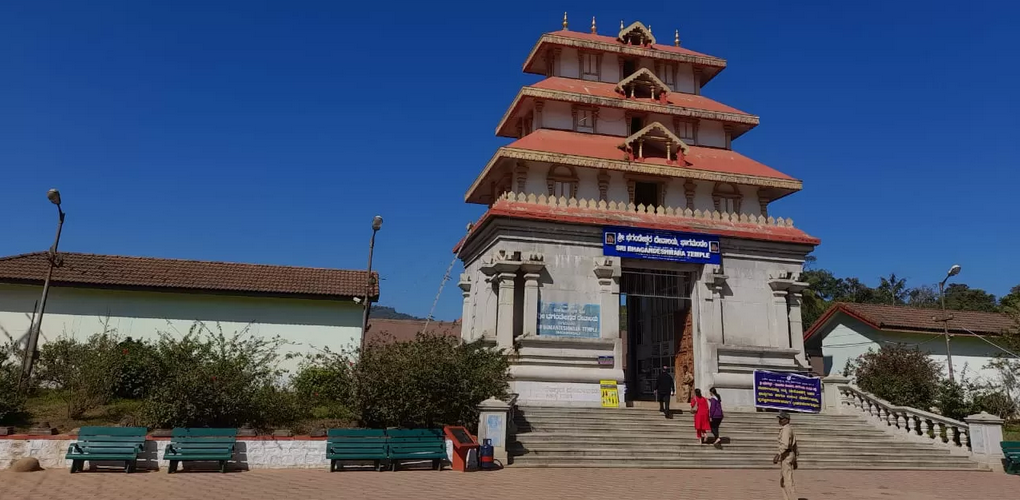Bhagamandala Temple: A Sacred Confluence of Rivers and Spirituality in Kodagu
The Bhagamandala Temple, located in the picturesque hills of Kodagu, Karnataka, is a sacred location set at the confluence of three rivers: the Cauvery, Kannike, and the legendary Sujyoti. This location, known as Triveni Sangam, is of great spiritual significance, with devotees flocking there to take a holy dip, believing it will cleanse their sins and grant them benefits. The temple, dedicated to Lord Shiva as Bhagandeshwara, is a prominent example of ancient South Indian architecture, with magnificently carved pillars and delicate woodwork that reflect the region's artistic legacy.
The temple is steeped in history and mythology, with legends linking it to sage Agastya and the river goddess Cauvery, highlighting its cultural significance. Pilgrims and visitors are drawn to Bhagamandala not just for its religious significance, but also for the serene surroundings, which provide a calm respite from modern life. The temple comes alive during major festivals like Maha Shivaratri and Tula Sankramana when thousands of devotees converge to offer prayers and perform rites.
One of the temple's distinguishing features is its connection to the yearly Cauvery Theerthodbhava, a natural phenomenon in which the river Cauvery emerges from its source in the neighbouring Brahmagiri hills. During this event, Bhagamandala becomes a main site of celebrations since the water from the Sangam is regarded as extremely sacred, and many people perform rites for their ancestors here. The quiet ambience, along with the location's deep spirituality, instils visitors with a sense of inner peace and dedication.
Though Bhagamandala Temple is not as well-known as other South Indian temples, it is still a popular destination for visitors seeking a combination of natural beauty and spiritual pleasure. The surrounding lush foliage, mist-covered hills, and flowing rivers provide a beautiful backdrop for prayer, making Bhagamandala more than just a religious pilgrimage destination, but also a retreat for individuals seeking to reconnect with nature and their inner selves.



